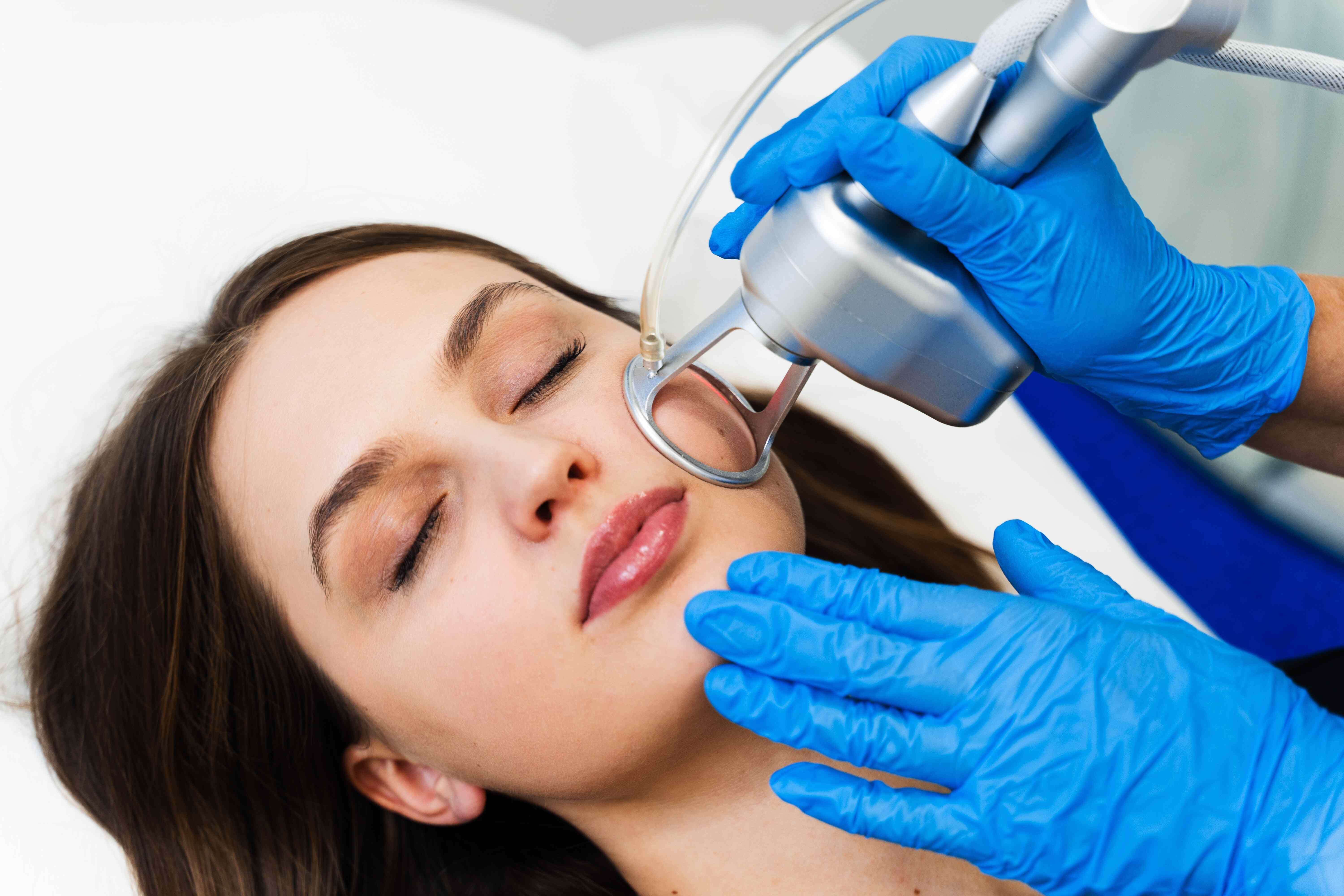6 Benefits of Carbon Laser Treatment

What is Carbon Laser Treatment?
The laser carbon treatment is a quick and painless technique that helps to enhance the appearance of the skin. People with acne, greasy skin, and enlarged or blocked pores benefit the most from Carbon Laser Treatment. If you are beginning to see skin damage from the sun, this treatment is very helpful, as well.
Benefits of Carbon Laser Treatment
Acne Cleansing and Pore Treatment
Sebaceous glands found in our skin create a substance known as sebum. The majority of these sebaceous glands are located in the scalp and face, and they are typically associated with our hair follicles. Sebum is the oil that floats to the top of our skin's surface to maintain moisture levels.
The extremely small holes around sweat and oil glands that allow those liquids to travel along the surface of our skin are known collectively as pores. These glands and pores become clogged as a result, a skin condition called acne occurs.
Treatment with a carbon laser will be particularly helpful for people who battle greasy skin, enlarged pores, and acne. Through the heating of the skin, the carbon laser procedure's laser energy will remodel and constrict pores. In turn, this will decrease excessive oil production and the appearance of larger, dilated pores.
The carbon laser may effectively cure and eliminate acne membranes as well as the encircling inflammation. It eliminates the germs, filth, and oil that are present in acne and aids in preventing flare-ups in the future. Additionally, because of its mildness, this laser therapy is excellent for treating acne on other parts of the body, such as the back.
Eliminate Fine Lines
The laser's intensity causes the skin to heat up during the lasering procedure. The skin is rejuvenated and fine lines and wrinkles are reduced as a result of the heat-induced stimulation of collagen, elastin, and fibroblast.
A protein called collagen accounts for 75% of the structural components of our skin. Our bones, tendons, and ligaments all contain it. Collagen is lost from the skin as we age, and the new collagen that is produced to replace it is of inferior quality. The carbon laser facials' lasers stimulate the growth of new collagen in a way that would not otherwise be achievable.
Another naturally occurring protein, elastin, is responsible for controlling the elasticity of many tissues, including the skin. A cell known as a fibroblast links and maintains many human tissues and organs. The cell that makes the aforementioned collagen protein is called a fibroblast.
Combats Dark Spots
For those with melasma, carbon laser therapy is a beneficial treatment. The overproduction of melanin, the pigment and coloring agent found in human skin, is known as melasma, a skin disorder. Melasma often develops between the ages of 20 and 40 and affects more women than males. The face is a common location for this hyperpigmentation, which has a considerable negative influence on many people's quality of life.
Since melasma is a chronic ailment, it calls for several continuing therapies. This holds true for the condition's treatment using carbon lasers as well. The lasers are most suited for patients who have not found relief through topical therapy since they break apart the melanin cells in the skin.
Evens Out Skin Tone
Carbon laser therapy is excellent for leveling out skin tone since it may encourage the formation of collagen, elastin, and fibroblasts as well as break up melanin-producing cells. Your skin will instantly become more even-toned and brighter after a treatment! Acne scars, uneven skin tones, and sun-induced early aging will all get better.
Improves Appearance of Stretch Marks
When the skin stretches beyond its normal flexibility, stretch marks develop. This is frequently caused by the following rapid gaining or loss of weight, pregnancy, and muscle development. These markings can be controlled and the skin's look can be enhanced with a carbon laser treatment.
Helps Reverse Sun Damage
Sun damage accounts for a big number of skin-related concerns. Exposing oneself to the light may seem innocuous, but doing so might harm your skin. Skin cancer, age spots, and wrinkles are all brought on by the sun.
Fortunately, a carbon laser peel can assist in reducing the appearance of skin imperfections and sun damage. Your skin may seem healthier and firmer as a result. This is how it goes: Carbon dioxide atoms are delivered through small perforations in the skin's surface by a laser beam. They disintegrate into thick tissue layers. This procedure lessens the appearance of skin imperfections.
Carbon Laser Treatment Procedure
From beginning to end, the multi-step laser carbon peel takes around 30 minutes.
What to anticipate from a normal laser carbon peel is as follows:
- A coating of liquid carbon will be applied to your face by your doctor. Deep within the pores, the carbon collects dirt, oil, and dead skin cells.
- It will take the liquid carbon around 10 minutes to dry.
- Your doctor will offer you eye shields to protect your eyes from the laser when the carbon has cured.
- Your doctor will use a low-energy laser, such as the Nd:YAG, on the skin. The carbon becomes heated and adheres to the epidermis as a result. Your doctor may advise omitting the heating phase if you have extremely sensitive skin or dark spots like melasma. The laser also causes the subdermal tissue to heat up, increasing collagen production and smoothing out tiny wrinkles.
- The liquid carbon will be broken up into tiny particles using the laser at a higher intensity setting.
- The laser's smoke evaporator will eliminate the carbon's trash and impurities in addition to it.
- Following treatment, your doctor could additionally apply a moisturizing moisturizer and sunscreen to your skin.
- Your skin ought to appear firmer and more radiant straight away. You can notice a very small pinking or reddening of your skin if you have sensitive skin. This normally just lasts an hour or so.
References
Acland, K. M., Calonje, E., Seed, P. T., Stat, C., & Barlow, R. J. (2001). A clinical and histologic comparison of electrosurgical and carbon dioxide laser peels. Journal of the American Academy of Dermatology, 44(3), 492-496.
Alster, T. S., & West, T. B. (1996). Resurfacing of atrophic facial acne scars with a high‐energy, pulsed carbon dioxide laser. Dermatologic Surgery, 22(2), 151-155.
Goldberg, D. J., & Whitworth, J. (1997). Laser skin resurfacing with the Q‐switched Nd: YAG laser. Dermatologic surgery, 23(10), 903-906.
Kim, C., Hwang, E., Kwon, J., Jang, T. H., Lee, W. C., Kim, S. H., ... & Lee, H. (2023). Plastic Shavings by Laser: Peeling Porous Graphene Springs for Multifunctional All‐Carbon Applications. Advanced Science, 2301208.
Meet our doctors from the Dermatology & Aesthetics department








